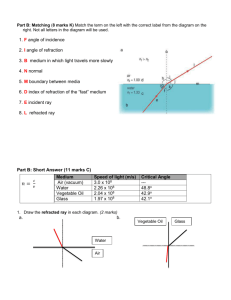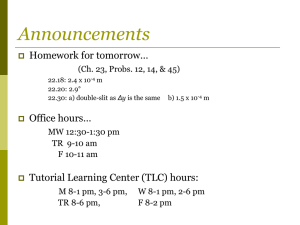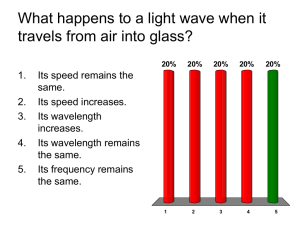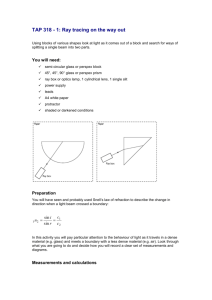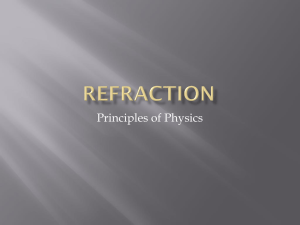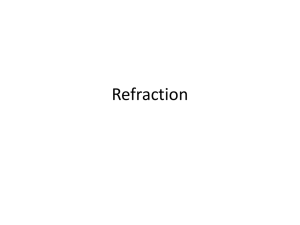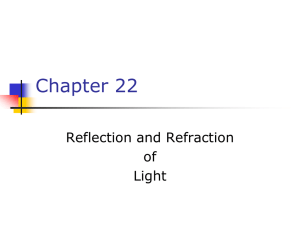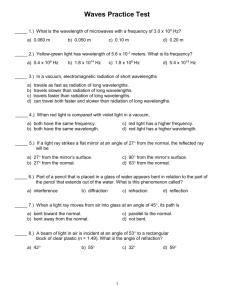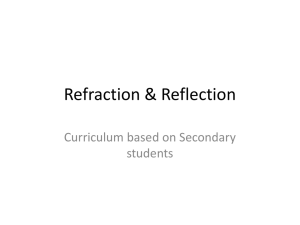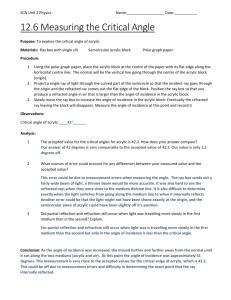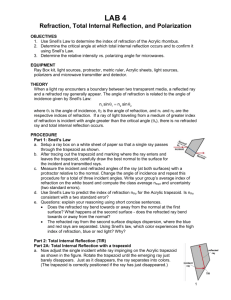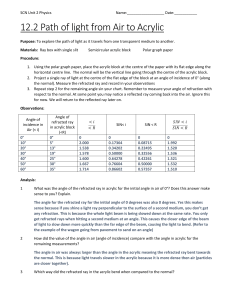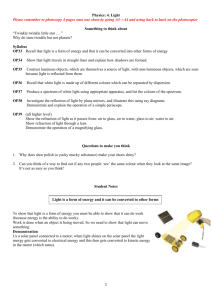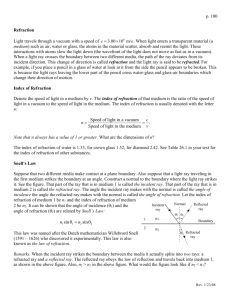Part A What is the wavelength of light in glass, if its wavelength in air
advertisement
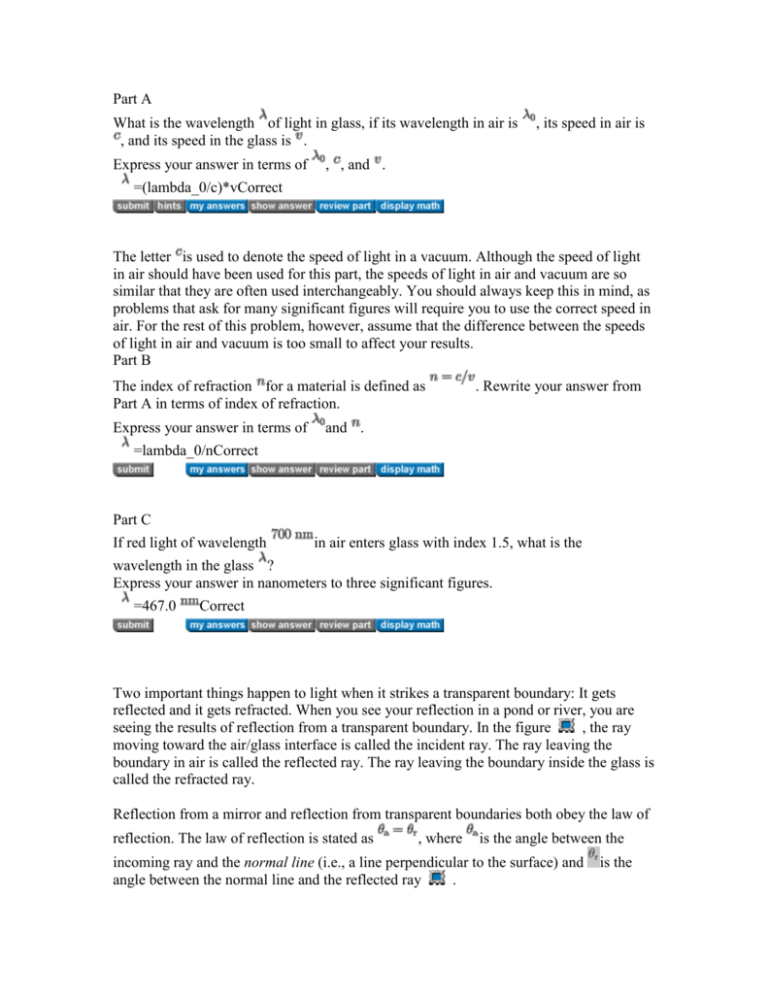
Part A What is the wavelength of light in glass, if its wavelength in air is , and its speed in the glass is . Express your answer in terms of , its speed in air is , , and . =(lambda_0/c)*vCorrect The letter is used to denote the speed of light in a vacuum. Although the speed of light in air should have been used for this part, the speeds of light in air and vacuum are so similar that they are often used interchangeably. You should always keep this in mind, as problems that ask for many significant figures will require you to use the correct speed in air. For the rest of this problem, however, assume that the difference between the speeds of light in air and vacuum is too small to affect your results. Part B The index of refraction for a material is defined as Part A in terms of index of refraction. Express your answer in terms of . Rewrite your answer from and . =lambda_0/nCorrect Part C If red light of wavelength in air enters glass with index 1.5, what is the wavelength in the glass ? Express your answer in nanometers to three significant figures. =467.0 Correct Two important things happen to light when it strikes a transparent boundary: It gets reflected and it gets refracted. When you see your reflection in a pond or river, you are seeing the results of reflection from a transparent boundary. In the figure , the ray moving toward the air/glass interface is called the incident ray. The ray leaving the boundary in air is called the reflected ray. The ray leaving the boundary inside the glass is called the refracted ray. Reflection from a mirror and reflection from transparent boundaries both obey the law of reflection. The law of reflection is stated as , where is the angle between the incoming ray and the normal line (i.e., a line perpendicular to the surface) and angle between the normal line and the reflected ray . is the Part D If light strikes the air/glass interface at an angle to the normal, what is between the normal and the reflected ray? Express your answer in degrees to three significant figures. , the angle =32.00 Correct The second important effect of light striking a transparent boundary is refraction. Refraction is the bending of light caused by the difference in the speed of light between materials. To understand this effect, it may be helpful to picture wavefronts approaching the boundary at an angle. The parts of the wavefronts that enter the glass first slow down. This difference in speed causes the wavefronts to bend downward, toward the normal line. Any time that light moves into a medium with a higher index of refraction (i.e., lower speed of light), the refracted ray has a smaller angle to the normal than the incident ray. Refraction follows a law known as Snell's law, which has the form . Since we are assuming that the speed of light in air is very close to the speed of light in vacuum, you will use in this problem. Note that the "angle between the incident ray and the normal" is usually shortened to just the "angle of incidence," and similarly the "angle between the refracted ray and the normal" is shortened to "angle of refraction." Part E If light strikes the air/glass interface at an angle of with respect to the normal of the surface, what is the angle of refraction ? Use 1.50 for the index of refraction of glass. Express your answer in degrees to three significant figures. =20.70 Correct Part F Now, use your answers from Parts D and E to find the angle between the reflected ray and the refracted ray, if the angle of incidence is . Express your answer in degrees to three significant figures. Angle between reflected and refracted rays =127.0 Correct
